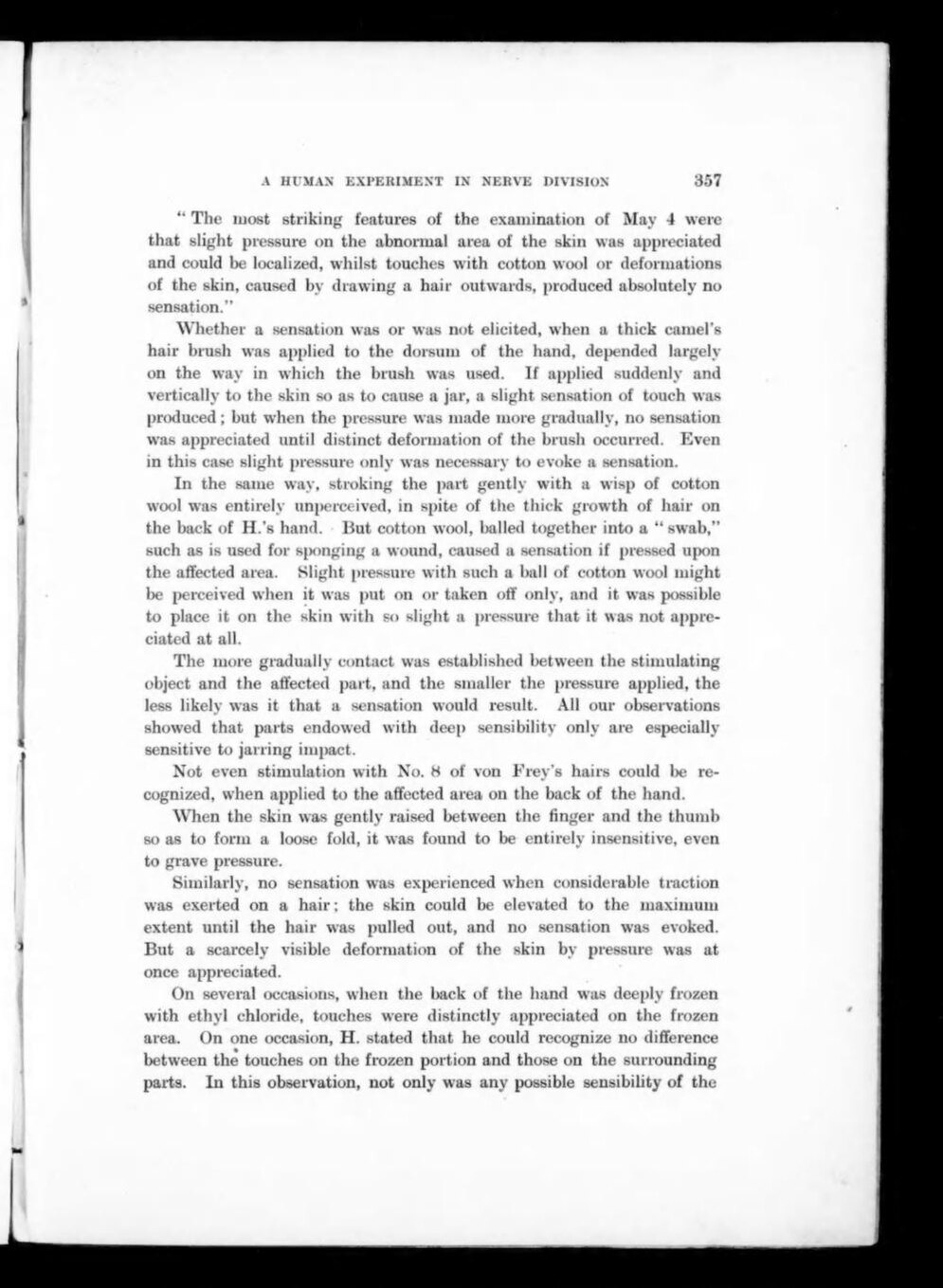"The most striking features of the examination of May 4 were that slight pressure on the abnormal area of the skin was appreciated and could be localized, whilst touches with cotton wool or deformations of the skin, caused by drawing a hair outwards, produced absolutely no sensation."
Whether a sensation was or was not elicited, when a thick camel's hair brush was applied to the dorsum of the hand, depended largely on the way in which the brush was used. If applied suddenly and vertically to the skin so as to cause a jar, a slight sensation of touch was produced; but when the pressure was made more gradually, no sensation was appreciated until distinct deformation of the brush occurred. Even in this case slight pressure only was necessary to evoke a sensation.
In the same way, stroking the part gently with a wisp of cotton wool was entirely unperceived, in spite of the thick growth of hair on the back of H.'s hand. But cotton wool, balled together into a "swab," such as is used for sponging a wound, caused a sensation if pressed upon the affected area. Slight pressure with such a ball of cotton wool might be perceived when it was put on or taken off only, and it was possible to place it on the skin with so slight a pressure that it was not appreciated at all.
The more gradually contact was established between the stimulating object and the affected part, and the smaller the pressure applied, the less likely was it that a sensation would result. All our observations showed that parts endowed with deep sensibility only are especially sensitive to jarring impact.
Not even stimulation with No. 8 of von Frey's hairs could be recognized, when applied to the affected area on the back of the hand.
When the skin was gently raised between the finger and the thumb so as to form a loose fold, it was found to be entirely insensitive, even to grave pressure.
Similarly, no sensation was experienced when considerable traction was exerted on a hair; the skin could be elevated to the maximum extent until the hair was pulled out, and no sensation was evoked. But a scarcely visible deformation of the skin by pressure was at once appreciated.
On several occasions, when the back of the hand was deeply frozen with ethyl chloride, touches were distinctly appreciated on the frozen area. On one occasion, H. stated that he could recognize no difference between the touches on the frozen portion and those on the surrounding parts. In this observation, not only was any possible sensibility of the
